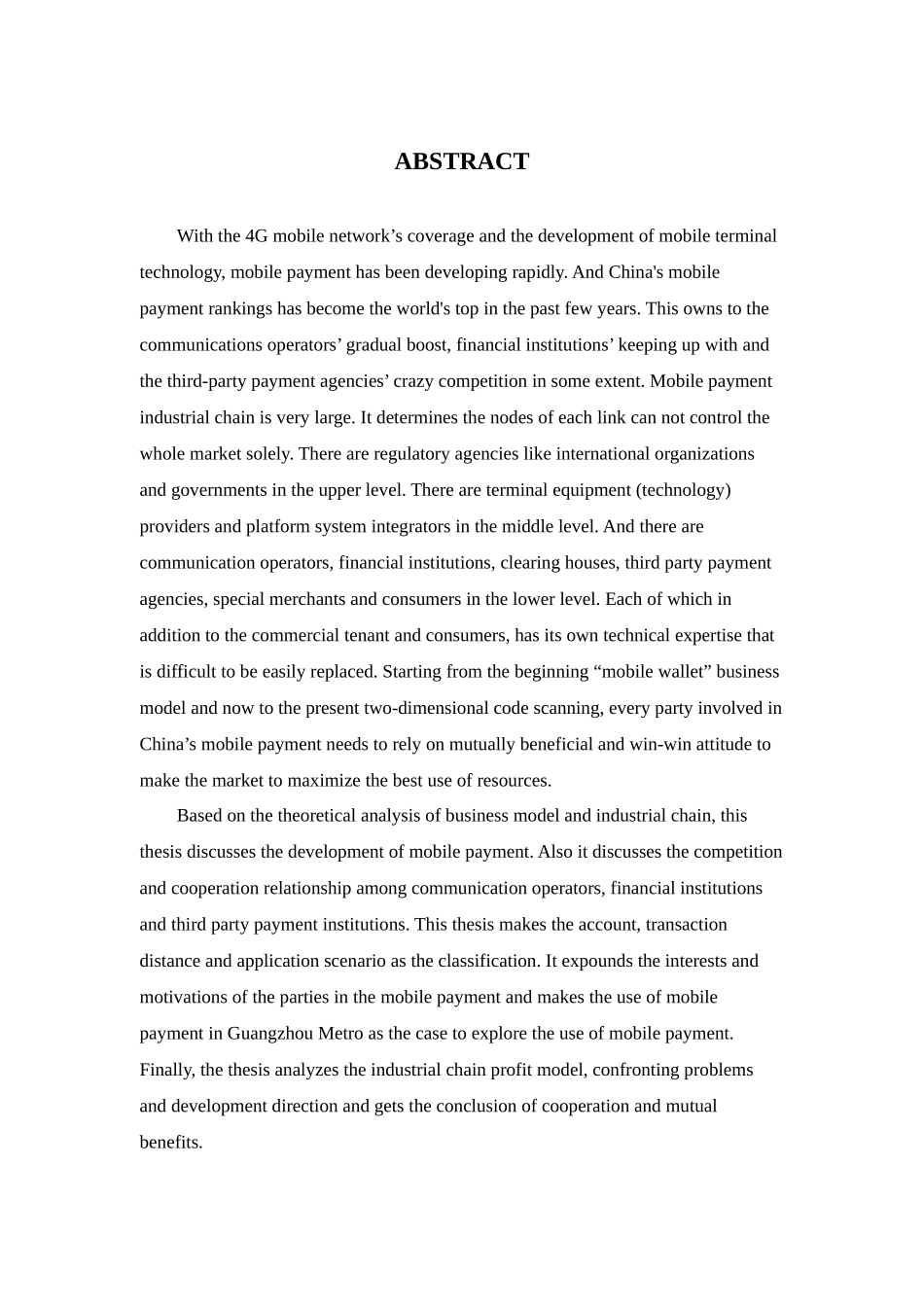内容摘要随着 4G 移动网络的覆盖以及移动终端技术的发展,移动支付发展迅猛,中国的移动支付排名在这几年已经一跃成为世界榜首,这其中有移动运营商的逐步推进,有金融机构的逐步紧跟,也有第三方支付机构的烧钱抢夺。移动支付的产业链十分庞大,这就决定了每个环节的节点都无法单方控制整个市场,上层有国际组织及政府等管制机构,中层有有终端设备(技术)提供商和平台系统集成商,下层有移动运营商、金融机构、清算机构、第三方支付机构、特约商户和消费者,这里面的每一个环节除了商户和消费者,每一个都有着自己专业的技术专项,难以被轻易取代。中国的移动支付的商业模式也由一开始的“手机钱包”发展到现在的二维码扫描,里面涉及的每一方都需要凭借互利共赢的心态才能够将使个市场产生最大的资源利用。本文基于对商业模式与产业链的理论分析,探讨了移动支付的发展,讨论了移动运营商、金融机构和第三方支付机构的竞合关系。本文先从账户、交易距离和应用场景作为分类,阐述在移动支付中各方的利益以及动力,并以广州地铁云支付作为案例探讨移动支付的使用。最后用产业链的盈利模式、面临问题及发展方向进行分析得出合作共赢的结论。在总结处,给三方今后的发展模式提供建议。关键词:移动支付;商业模式;产业链ABSTRACTWith the 4G mobile network’s coverage and the development of mobile terminal technology, mobile payment has been developing rapidly. And China's mobile payment rankings has become the world's top in the past few years. This owns to the communications operators’ gradual boost, financial institutions’ keeping up with and the third-party payment agencies’ crazy competition in some extent. Mobile payment industrial chain is very large. It determines the nodes of each link can not control the whole market solely. There are regulatory agencies like international organizations and governments in the upper level. There are terminal equipment (technology) providers and platform system integrators in the middle level. And there are communication operators, financial institutions, clearing houses, third party payment agenci...


